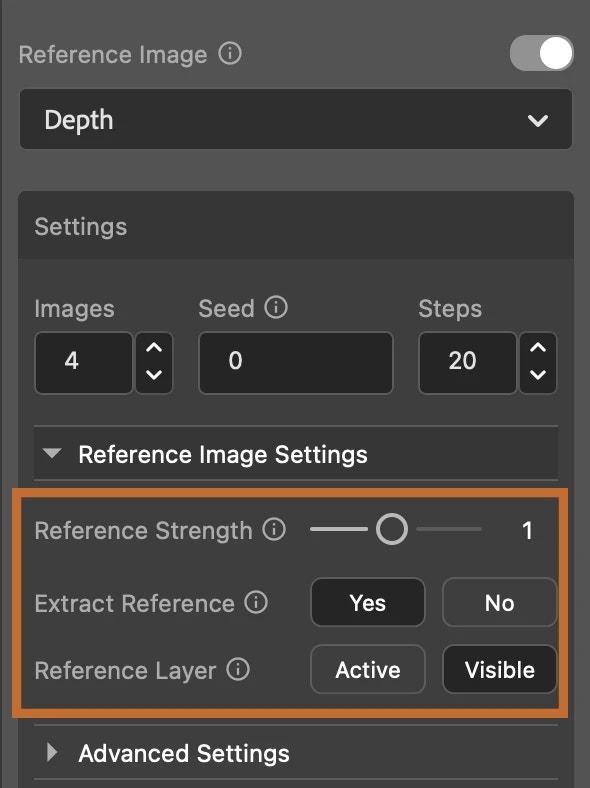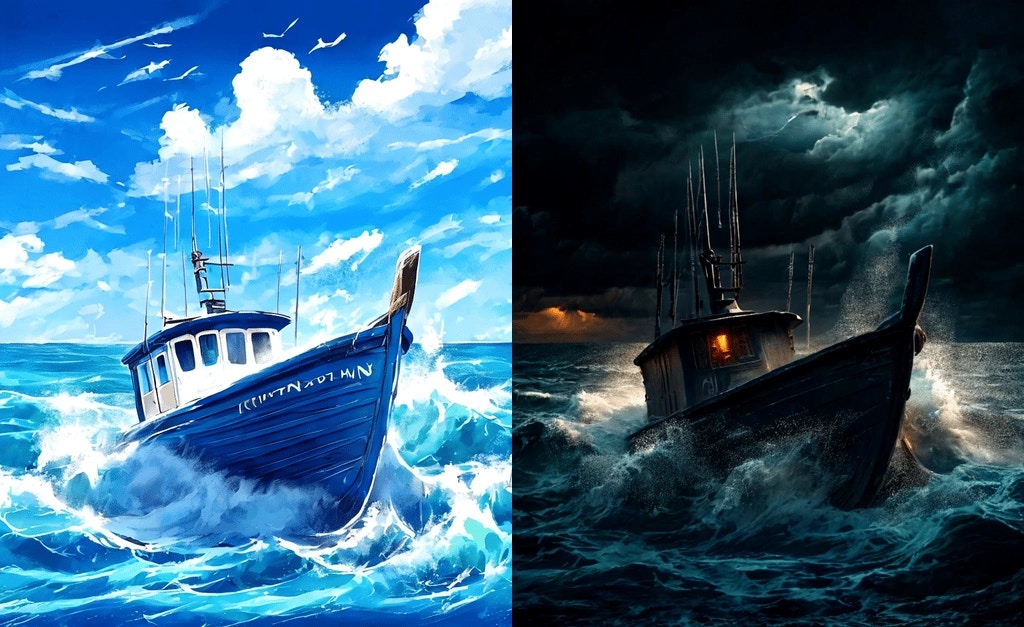
Getting Started
- Select Your Reference Image: Begin by choosing an image that contains the compositional elements you want to use in your new generation. Add this image to your document in Adobe Photoshop.
-
Enable References: Navigate to either the Imagine or the Transfer tool
within Alpaca. Look for the ‘Reference’ toggle and enable it.
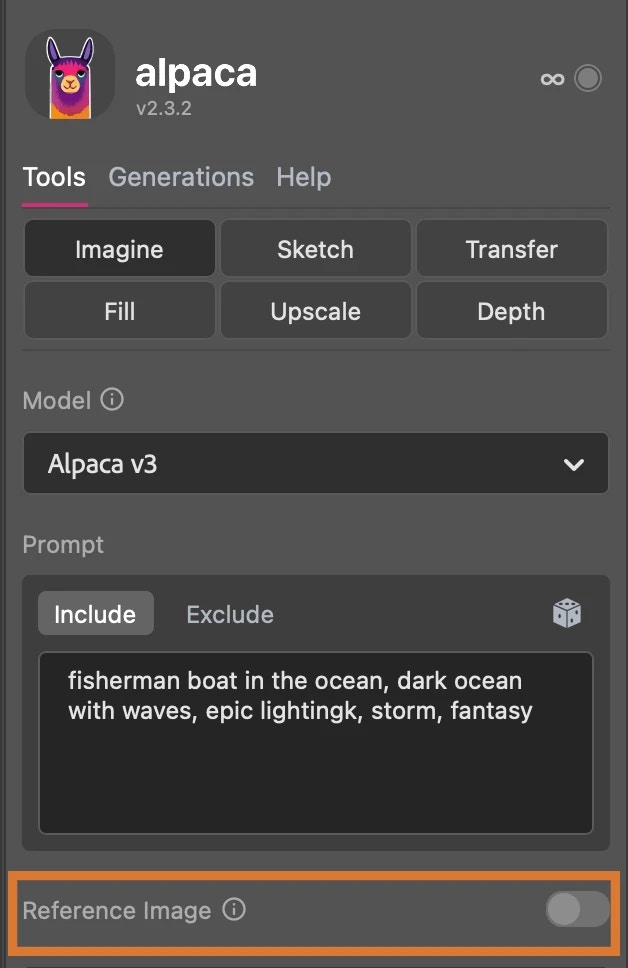
-
Choose Your Reference Type: Based on the compositional elements you want
to use from your reference image, select the appropriate reference type. Your
options are ‘Depth’, ‘Pose’, ‘Hard Edges’, and ‘Soft Edges’. See below for more
details on the different types.
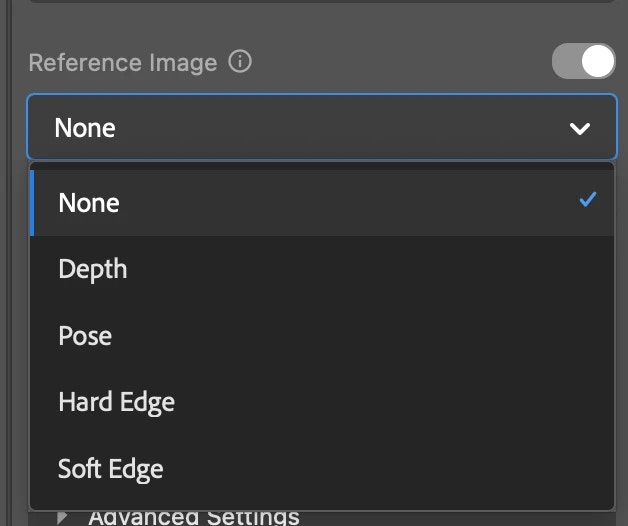
- Include the Reference in Your Selection: Ensure that your reference image is included in your active selection. The plugin uses this selection to understand which content to use as the reference. You may also choose a specific layer to take the reference content from, see the Advanced Settings section below for more details.
- Enter Your Prompt and Generate: Once your reference is set, input your desired text prompt as normal and click the ‘Generate’ button to start the image generation process.
Reference Types
Depth
The Depth reference type is a good choice for when your reference image displays a sense of space and depth, like a serene landscape stretching out to distant mountains, a quiet street vanishing into a horizon, or a bustling room filled with objects near and far. Use this reference type when you want your new image to match the depth in your reference image, reflecting the sense of three-dimensionality and perspective.Foggy Dark Fantasy City

Pose
The Pose type is for when your reference image includes characters or figures. It focuses on their positioning, serving as a guide for the creation of character-based imagery in your own work. If you’re aiming to generate images of a character in a specific stance or action, this is the ideal reference to use.Sketch of a Woman in Tokyo
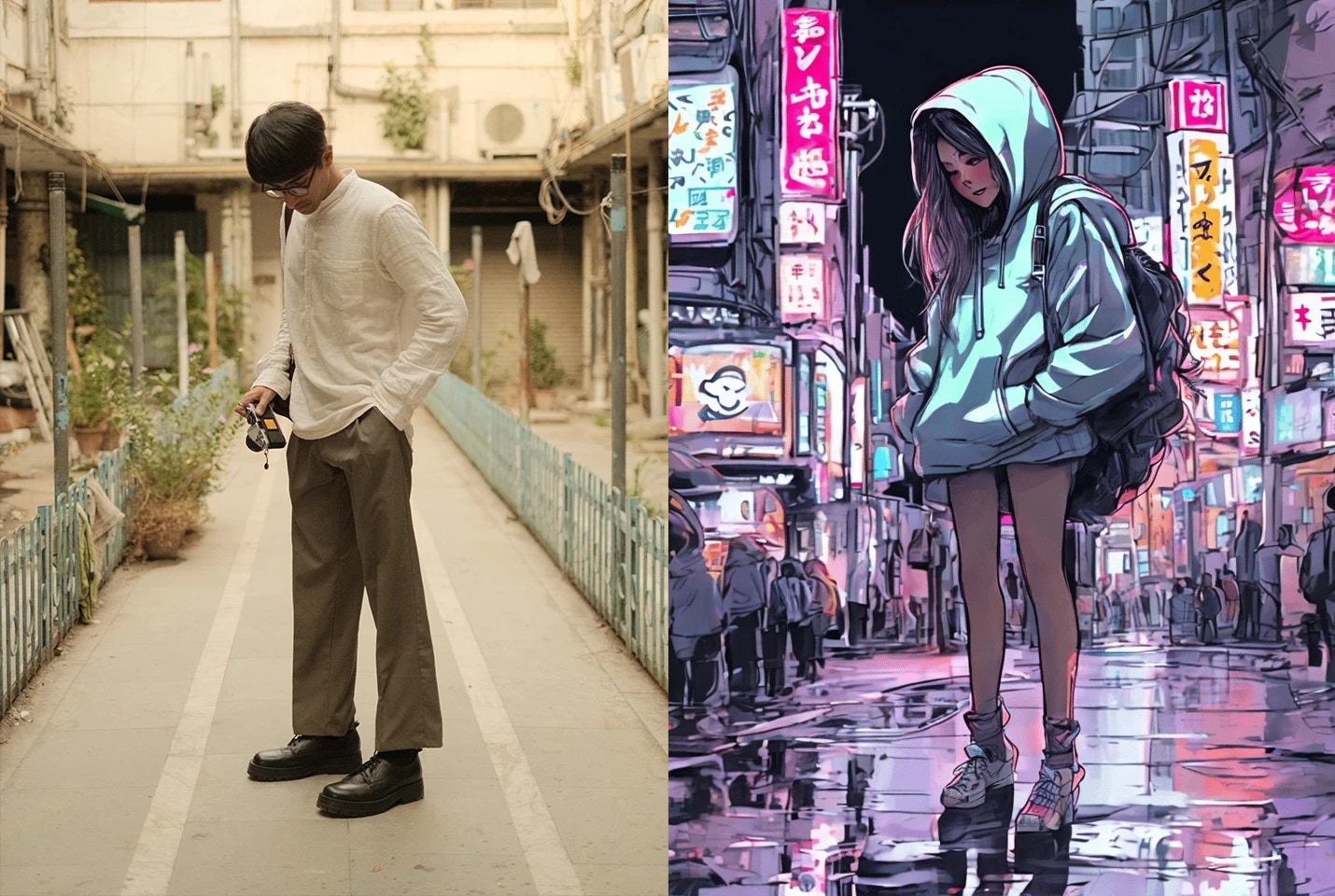
Hard Edges
The Hard Edges reference type is your go-to for extracting strong, clear lines and distinct shapes from your reference image. This type is perfect for images featuring bold, detailed structures, such as city skylines or intricate geometric designs. Use this reference when you want your generated image to reflect the detailed composition of your reference.Sunset Anime High Rise
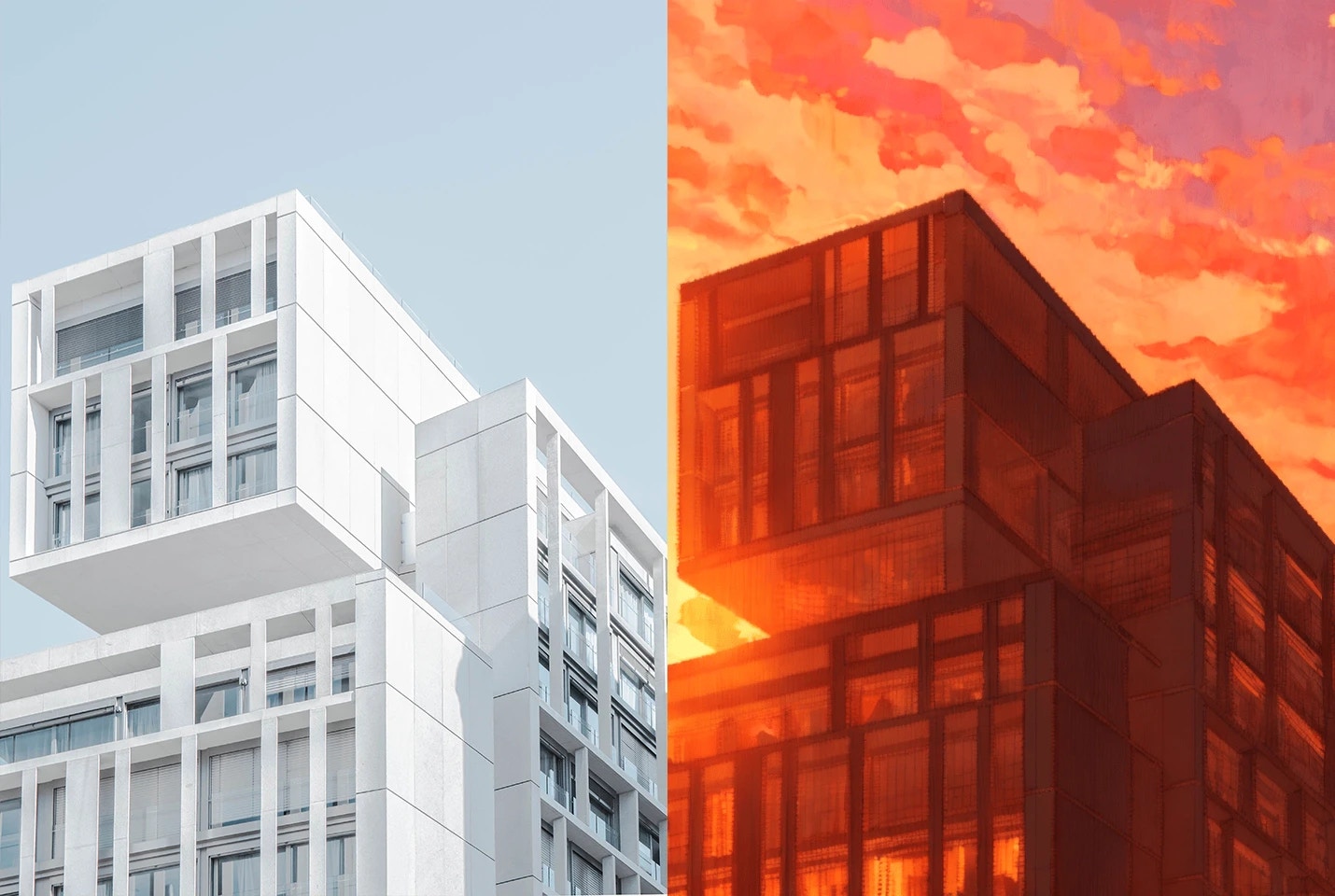
Soft Edges
The Soft Edges reference type is for when your inspiration comes from an image with a more fluid, gentle composition. It’s excellent for instances where the elements in your reference image gracefully meld into one another, like an image capturing the motion of fabric in the wind, the delicate play of hair, the lively nature of a puppy, or the diffuse boundaries in a watercolor painting. Use this reference when you wish your new creation to embody the broad strokes of your reference’s composition, without being confined by rigid lines or precise forms.Space Meerkat

Advanced Settings
